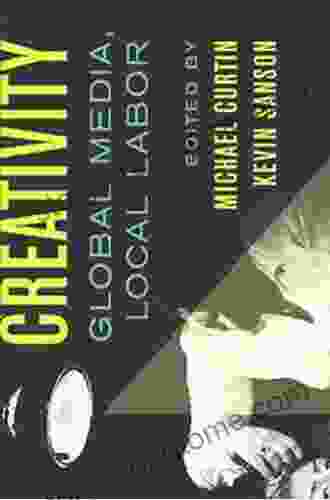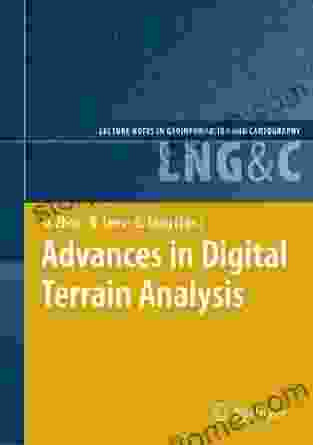Advances in Digital Terrain Analysis: Unlocking the Power of Terrain Data

Digital terrain analysis (DTA) has become an essential tool in various fields, including geography, geology, environmental science, and engineering. Terrain data, such as digital elevation models (DEMs) and digital terrain models (DTMs),provides valuable insights into the physical characteristics of the Earth's surface. Advances in data acquisition technologies, processing algorithms, and visualization techniques have significantly enhanced the capabilities of DTA.
Remote sensing technologies, such as LiDAR (Light Detection and Ranging) and photogrammetry, have revolutionized terrain data acquisition. LiDAR systems use laser pulses to measure the distance to the ground, producing highly accurate and detailed elevation data. Photogrammetry involves the use of aerial or satellite images to generate 3D representations of the terrain. These technologies have enabled the creation of high-resolution DEMs and DTMs, providing a wealth of information for terrain analysis.
Advanced algorithms have been developed for processing terrain data. Interpolation techniques, such as kriging and inverse distance weighting, are used to estimate elevation values at unsampled locations. Terrain analysis tools, such as slope, aspect, and curvature, are derived from DEMs to provide insights into the terrain's morphology and hydrology. Geomorphological analysis techniques, such as watershed delineation and stream network extraction, allow for the characterization of terrain features and their relationships.
4 out of 5
| Language | : | English |
| File size | : | 7709 KB |
| Text-to-Speech | : | Enabled |
| Word Wise | : | Enabled |
| Print length | : | 476 pages |
Effective visualization is crucial for communicating terrain information. 3D terrain models, generated from DEMs or DTMs, provide a realistic representation of the terrain's surface. Geographic information systems (GIS) software enables the integration of terrain data with other geospatial data, such as land cover, infrastructure, and population density. Interactive visualization tools allow users to explore and analyze terrain data in various ways, enhancing understanding and decision-making.
DTA has a wide range of applications in various fields:
Geography and Geology: Terrain analysis is used to study landforms, topography, and geological processes. It helps in understanding the Earth's surface dynamics, slope stability assessments, and hazard mapping.
Environmental Science: DTA supports environmental modeling, such as hydrological simulations and erosion risk assessment. It provides insights into watershed characteristics, runoff patterns, and soil erosion potential.
Engineering: Terrain data is essential for engineering design and construction. It aids in route planning, slope stability analysis, and the design of dams, bridges, and other structures.
Agriculture and Forestry: DTA helps in assessing land suitability for agriculture and forestry. It provides information on soil characteristics, slope, and drainage conditions, enabling informed land management decisions.
Urban Planning: Terrain analysis is used in urban planning to assess flood risk, optimize land use, and design sustainable cities. It also supports the development of transportation networks and other infrastructure.
Advances in digital terrain analysis have transformed the way we understand and utilize terrain data. With improved data acquisition, processing, and visualization capabilities, DTA has become an indispensable tool for various scientific, environmental, and engineering applications. As technology continues to advance, we can expect even more powerful and innovative techniques to emerge, further unlocking the potential of terrain data for the benefit of society.
4 out of 5
| Language | : | English |
| File size | : | 7709 KB |
| Text-to-Speech | : | Enabled |
| Word Wise | : | Enabled |
| Print length | : | 476 pages |
Do you want to contribute by writing guest posts on this blog?
Please contact us and send us a resume of previous articles that you have written.
 Book
Book Novel
Novel Page
Page Chapter
Chapter Text
Text Story
Story Genre
Genre Reader
Reader Library
Library Paperback
Paperback E-book
E-book Magazine
Magazine Newspaper
Newspaper Paragraph
Paragraph Sentence
Sentence Bookmark
Bookmark Shelf
Shelf Glossary
Glossary Bibliography
Bibliography Foreword
Foreword Preface
Preface Synopsis
Synopsis Annotation
Annotation Footnote
Footnote Manuscript
Manuscript Scroll
Scroll Codex
Codex Tome
Tome Bestseller
Bestseller Classics
Classics Library card
Library card Narrative
Narrative Biography
Biography Autobiography
Autobiography Memoir
Memoir Reference
Reference Encyclopedia
Encyclopedia Scott Stonington
Scott Stonington Sean Williams
Sean Williams Madelyn Rosenberg
Madelyn Rosenberg Lloyd Woodward
Lloyd Woodward Tracy Parker
Tracy Parker William Shakespeare
William Shakespeare Richard Delacy
Richard Delacy Sheldon D Newton
Sheldon D Newton Sandra Mariah Wright
Sandra Mariah Wright Laury Silvers
Laury Silvers Leonard Smith
Leonard Smith Marion Dane Bauer
Marion Dane Bauer Liane Holliday Willey
Liane Holliday Willey Wale Oyeniyi
Wale Oyeniyi Lippi Lal
Lippi Lal Martyn T Cobourne
Martyn T Cobourne M Ramzy
M Ramzy Leonard W Levy
Leonard W Levy Oliver Jeffers
Oliver Jeffers Sahadat Hossain
Sahadat Hossain
Light bulbAdvertise smarter! Our strategic ad space ensures maximum exposure. Reserve your spot today!

 Joseph HellerUnravel the Enigmatic "Mystery of the Invisible Woman" in the Thrilling 15th...
Joseph HellerUnravel the Enigmatic "Mystery of the Invisible Woman" in the Thrilling 15th...
 Ronald SimmonsUnlock Your AutoCAD Potential: Explore 'AutoCAD Exercises' by Sachidanand Jha
Ronald SimmonsUnlock Your AutoCAD Potential: Explore 'AutoCAD Exercises' by Sachidanand Jha Miguel de CervantesFollow ·4.9k
Miguel de CervantesFollow ·4.9k Branden SimmonsFollow ·12.1k
Branden SimmonsFollow ·12.1k Travis FosterFollow ·8.8k
Travis FosterFollow ·8.8k Howard PowellFollow ·17.7k
Howard PowellFollow ·17.7k Roland HayesFollow ·18k
Roland HayesFollow ·18k Willie BlairFollow ·15.4k
Willie BlairFollow ·15.4k Pete BlairFollow ·7.2k
Pete BlairFollow ·7.2k Raymond ParkerFollow ·10.8k
Raymond ParkerFollow ·10.8k

 E.M. Forster
E.M. ForsterThe Real Blueprint to Short-Term Rental Success
Are you ready to create a...

 Mark Mitchell
Mark MitchellMidas Touch: The Astrology Of Wealth
Are you ready to tap into the cosmic forces...

 Grant Hayes
Grant HayesPrecarious Creativity: Unpacking the Global Media and...
In the ever-evolving landscape of the...

 Cameron Reed
Cameron ReedGuru Govind Singh: A Life of Courage and Inspiration for...
Guru Govind Singh, the tenth Sikh guru,...

 Yukio Mishima
Yukio MishimaCastles & Shapes: The Enchanting World of Ris...
In the realm of...

 Jerome Blair
Jerome BlairGolden Keys To Jyotisha Volume Ten: The Ultimate Guide to...
Embark on an...
4 out of 5
| Language | : | English |
| File size | : | 7709 KB |
| Text-to-Speech | : | Enabled |
| Word Wise | : | Enabled |
| Print length | : | 476 pages |








